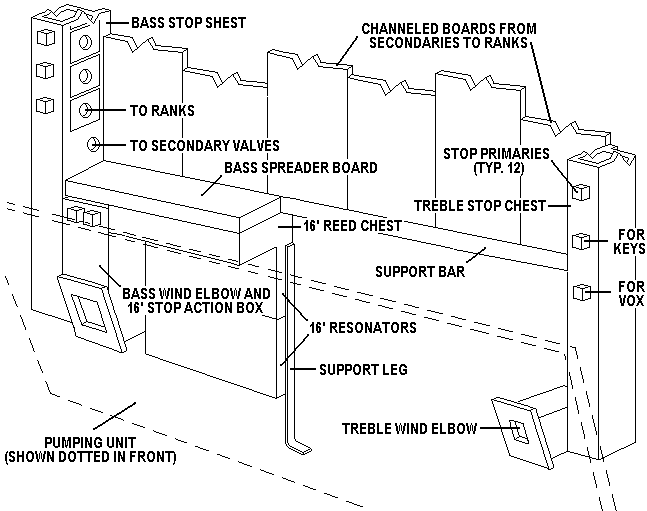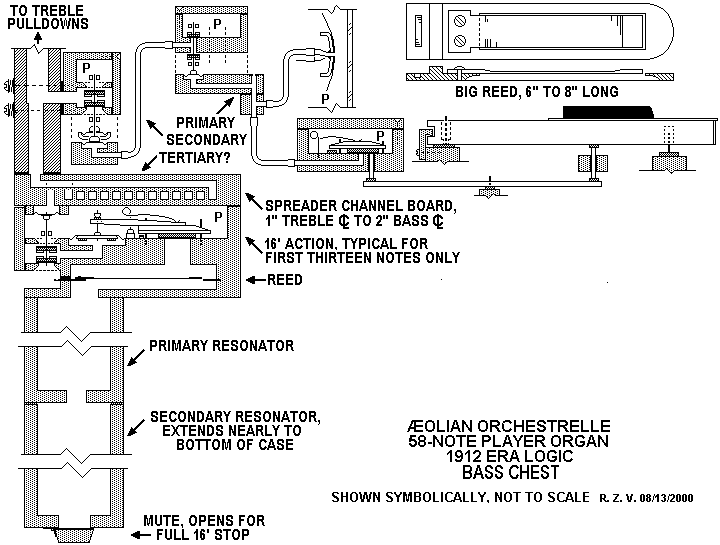
Chapter 5.1 - The Bass Chest, Introduction
Before any work is done on anything that is above the keybed line, the 16' sub bass chest and its associated stop action, must be completed. These items are also vital structural elements in the organ, and support everything "above the deck". Here is the general arrangement of all the major lower half components. As you see, the top of the bass chest forms a sort of shelf, which defines the bottom of the left side of the entire upper works. When I got the organ, it had been stored and shipped with many of the internal components disconnected, and not properly supported. The weight of the bass chest had caused it to fall in the center, stripping some of the screws that held it together top-to-bottom, and helping to cause the bass stop action box to split open at the top.

Here is how the bass reed chest works. For the lowest thirteen notes, the channels that normally control the rank pallet pulldown, are also directed to a row of pouches in the bass chest. These operate secondary-secondary valves. (Should these be called tertiary valves?) When these valves act, they vent large square pouches, which in turn, open pallets which admit wind to the huge bass reeds.

This chapter is subdivided thus:
Chapter 5.1 - Introduction
Chapter 5.2 - The Bass Stop-action Box
Chapter 5.3 -The Bass Pallets and Pulldown Pouches
Chapter 5.4 - The "Tertiary" Valves, and Final Test